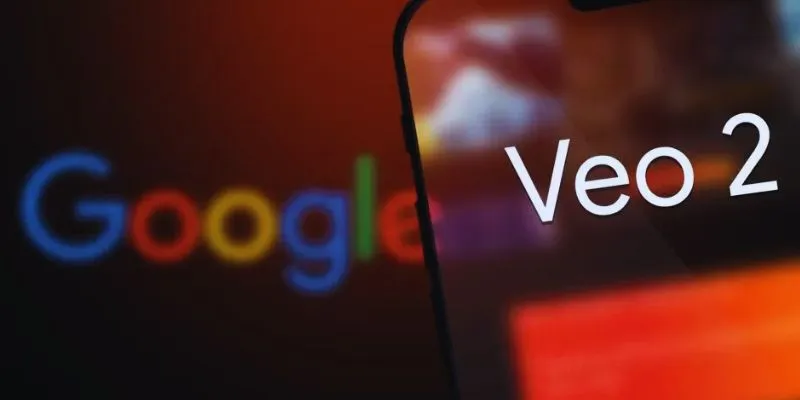When it comes to vision-language models, the common perception involves massive systems requiring large datasets, enormous computational power, and extensive training time. These systems, often characterized by bulky architectures, may be effective but are far from being efficient. This is where SmolVLM, a small, efficient, yet competent vision-language model, changes the game.
Designed for a new age of lighter, smarter AI, SmolVLM is reshaping our understanding of multimodal learning. Despite its modest size, its performance is exceptional, demonstrating the ability to do more with less, a trait worth exploring.
Efficiency and Broad Capabilities: The Core of SmolVLM
At the heart of SmolVLM’s design is the focus on efficiency. In an era where scaling up is the norm, the creators of SmolVLM took a different approach—scaling down without compromising accuracy. It integrates visual and language processing into a singular lean model, capable of handling both inputs effectively. The vision side processes images, while the language component handles text parsing and generation. Its uniqueness lies in the seamless communication between these parts, despite its smaller size.
Instead of depending on large volumes of training data and parameter-heavy encoders, SmolVLM leverages distilled knowledge from larger models, amalgamated with clever training methodologies. These techniques, such as contrastive learning and adapter modules, enable the model to associate words with images intuitively and swiftly. This compact size makes it ideal for real-time performance tasks such as mobile apps, robotics, and embedded systems.
Unlike conventional models, SmolVLM operates without the need for multiple GPUs. It can run on limited hardware, making it more accessible for developers, researchers, and companies without access to extensive infrastructure. This allows for wider experimentation and usage, particularly in resource-constrained environments.
Seamless Integration of Text and Image Understanding
The essence of a vision-language model lies in its ability to establish connections between what it sees and what it understands. SmolVLM performs remarkably well across several benchmarks such as image captioning, visual question answering, and image-text retrieval. Although it might not surpass the largest models in every metric, it’s surprisingly close in many areas—a noteworthy achievement considering its size.

One of SmolVLM’s advantages is its precision in grounding. When presented with an image and a question, it excels at identifying the part of the image relevant to the question and using that to form an answer. This spatial and semantic alignment enables SmolVLM to provide nearly human-like understanding of visual scenes.
The secret to SmolVLM’s success lies in its handling of tokenization and embeddings. It employs shared embeddings between image patches and word tokens, creating a common space for both to interact naturally. This shared space minimizes loss in translation when the model switches between visual and linguistic inputs, leading to cleaner and more accurate responses.
For instance, its image captioning doesn’t just list objects in a picture. It constructs descriptions that reflect context and relationships between objects, providing a more comprehensive understanding of the scene.
The Practicality of SmolVLM
The efficiency of SmolVLM extends beyond lab tests. It’s ideal for scenarios that require fast, reliable image and language interpretation without draining power or needing cloud resources. Applications include wearable devices, offline translation tools, smart home systems, and educational tech in rural areas—environments where larger models are impractical.
The lightweight nature of SmolVLM also helps address privacy issues. Since it can be deployed locally, there’s no need to send data back to a server, reducing exposure risks. This opens up use cases in healthcare, remote diagnostics, and field research, where privacy is paramount and internet access may be limited.
Furthermore, SmolVLM democratizes AI development. Smaller teams without massive budgets can train, fine-tune, and deploy SmolVLM on standard hardware. This encourages innovation and gives more individuals the tools to create vision-language applications.
The adaptability and versatility of SmolVLM have sparked interest in the open- source community, with some versions being fine-tuned for specific tasks such as medical imaging, wildlife monitoring, and low-resource language support.
SmolVLM: A Paradigm Shift in AI Models
The introduction of SmolVLM marks a shift in the AI landscape. It challenges the norm that bigger is always better. Its development is part of a larger movement in AI towards smaller, more accessible systems that don’t compromise too much on their capabilities.

While SmolVLM isn’t meant to replace the largest vision-language models, it proves there is room for different kinds of tools. In some tasks, speed and size matter just as much as accuracy. For developers working in real-time systems or edge computing, SmolVLM provides a pathway to bring vision-language intelligence to places previously inaccessible.
There’s something refreshing about its simplicity. It doesn’t overcomplicate the process. It doesn’t try to do everything. But what it does, it does well. That restraint is part of its strength. It’s a model built not just to perform but to be used—by more people, in more ways, and more places.
Conclusion
SmolVLM doesn’t merely advocate for smaller models—it embodies it. In an industry obsessed with scale, it serves as a reminder that intelligence isn’t solely about size. This compact system demonstrates that with the right design, even limited tools can achieve exceptional feats. Its ability to seamlessly link images and language makes it invaluable in ways that transcend benchmarks. SmolVLM may be small, but it packs a powerful punch, making it a standout in today’s AI world.
 zfn9
zfn9























